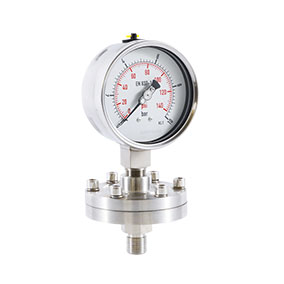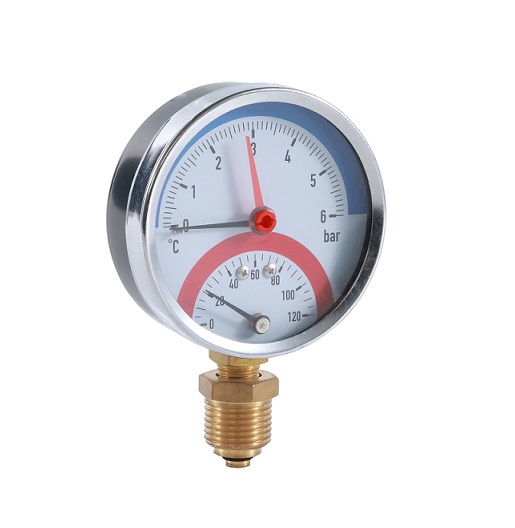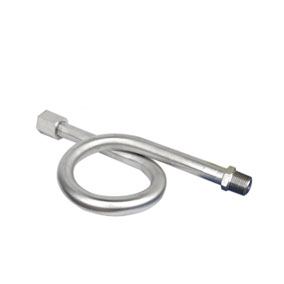Principe de fonctionnement principal du manomètre à membrane
As a commonly used pressure measurement tool in industry, diaphragm pressure gauge is widely used in chemical, pharmaceutical, food and other industries. Its unique working principle enables it to maintain high accuracy and stability when facing high temperature, high pressure and corrosive media. This article will explore the working principle, structural characteristics and application of diaphragm pressure gauge in various industries to help users better understand the functions and advantages of this device.
Principe de fonctionnement
The core working principle of manomètre à membrane is to sense the pressure change of the measured medium through the diaphragm element. The diaphragm is made of flexible materials such as stainless steel, aluminum alloy, titanium alloy or other corrosion-resistant materials, and usually has good wear resistance and corrosion resistance. Its basic principle can be divided into several steps:
Diaphragm deformation: When the pressure of the measured medium acts on the diaphragm, the diaphragm will deform. This deformation is caused by the change of external pressure, and the size of the deformation is proportional to the change of pressure.
Pressure conversion: The deformation of the diaphragm is converted into a measurable signal by mechanical or electronic means. In traditional mechanical diaphragm pressure gauges, the deformation of the diaphragm is transmitted through the connected lever system, springs and gears, driving the pointer to display the pressure value on the dial. In electronic diaphragm pressure gauges, the deformation of the diaphragm is usually converted into an electrical signal through capacitors, resistors or piezoelectric sensors, and then the pressure value is displayed on the display.
Signal amplification and display: After the electronic signal is amplified and processed, it is finally displayed on the display in digital or analog form, which is convenient for operators to monitor pressure changes in real time.
Structure of diaphragm pressure gauge
The main components of diaphragm pressure gauges include diaphragms, transmission mechanisms, housings, indicating devices (mechanical or electronic) and connecting parts. Different types of diaphragm pressure gauges have slightly different structures, but their working principles are roughly the same:
Diaphragm: As the core component of pressure transmission, the selection of diaphragm materials is very important. Common diaphragm materials include stainless steel, alloys, aluminum, titanium, etc., and the appropriate material is selected according to the properties of the measured medium (such as corrosiveness, viscosity, etc.).
Transmission mechanism: Mechanical diaphragm pressure gauges usually convert the deformation of the diaphragm into the displacement of the pointer through mechanical devices such as levers and springs.
Display device: Mechanical pressure gauges display pressure values through pointers and dials, while electronic pressure gauges present pressure data through digital displays or LED screens.
Application range
The wide application of diaphragm pressure gauges is due to their ability to cope with various harsh working environments. It is mainly used to measure corrosive, viscous, high-temperature or high-pressure media, such as chemical, food, pharmaceutical, electric power, petroleum and other industries.
Chemical industry: In the chemical production process, corrosive media such as strong acids and strong alkalis are often involved. Diaphragm pressure gauges can effectively avoid direct contact between media and sensor elements to prevent corrosion damage.
Food and pharmaceutical industries: In the production process of these two industries, high-temperature, high-pressure or easily corrosive media are often involved. Diaphragm pressure gauges can provide accurate pressure measurement and ensure production safety.
Oil and gas industry: In the process of oil and gas extraction, transportation and refining, the corrosiveness of the medium and the high-temperature environment require the pressure measuring instrument to have strong durability, and the diaphragm pressure gauge just meets this demand.
Whether in the chemical, food or petroleum industries, diaphragm pressure gauges can effectively ensure the safety and stability of the production process. With the continuous development of technology, the performance of diaphragm pressure gauges and manomètres has been continuously improved, providing more accurate pressure measurement solutions for industrial production.




